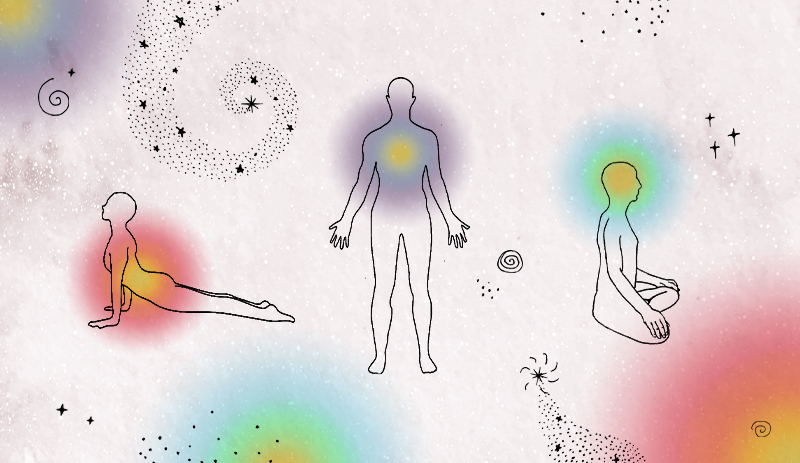What is Meditation?
First of all meditation is a skill that needs constant practice. It’s an awareness and mindfulness training. It’s about learning to observe your thoughts and feelings without judgment or trying to turn them off. Also, it’s about getting a healthy sense of perspective and working on being present. The ability to be present, rest and fully engage in the moment is the definition of mindfulness.
What’s more, meditation is about connecting with your breathing. Paying attention to our breath, learning to return and remain in it, builds the muscles of mindfulness. Consistent practice will get you more comfortable with your mind.
In addition, it doesn’t matter how much time you dedicate to your meditation as long as you show up. Showing up is the first step to success on any goal, and the first step is the key to obtaining the experience you have longed for.
Why meditate?
Regular practice can provide numerous mental and physical health benefits. Meditation is an effective way of understanding your pain, either mental, physical, or psychosomatic, lower your stress levels, improve your focus, reduce brain chatter, and connect better, with your inner self and others. When we meditate, we inject far-reaching and long-lasting benefits into our lives.

Types of Meditation
With so overwhelming information out there about meditation and mindfulness, many people don’t know where to start. Therefore, abandoning the idea before even trying.
The process of finding the type of meditation that’s right for you can take time, but the benefits will make it worthwhile. Although, before choosing your type, it’s important to decide whether you’re looking for a guided or unguided meditation.
A guided meditation is when you have an instructor talking you through the process. This can be especially helpful for beginners. The unguided meditation can be more personal as you have no instructor, and you are free to follow your own method and pace.
Once you decide on how you will be guided, let us walk you through a mindful how-to guide on 5 easy types of meditation practice to help you get started.
1. The Focused Breathing Meditation
Simple yet powerful, focused breathing is exactly what the name suggests. Sitting quietly and focusing on your breath.
How to do it:
Sit in a comfortable position, either on the ground or a seat. Keep your spine straight and close your eyes. Start observing your breath, the natural inhale and exhale. Notice the spaces in between your inhales and exhales. Notice how these gaps start to expand. Breathe softly and try to keep your body still. If you mind starts to wander, it’s ok. Just try to come back to simply observing your breath.
2. The Box or 4-Square Breathing Meditation
Box breathing is a great type of meditation for people dealing with intense responses to anxiety and stress. It’s a practice that intents to stimulate the vagus nerve, which helps to lower the heart rate, bring the body out of the fight-or-flight response, and sends signals to areas of the brain that control mood. Therefore, 4-square breathing is an immediate way to relax mind and body.
How to do it:
Sit with your back supported in a comfortable seat, and let your feet touch the floor. Close your eyes, relax your abdomen, and place one hand just beneath the ribs.
Inhale through your nose while counting to 4, slowly filling your lungs with air.
Hold your breath in for a count of 4.
Exhale slowly through the mouth at the same 4-count pace.
Hold your lungs empty for 4.
Once you settle into the pattern, repeat 10 to 15 times or more if needed.
Focus on the breath coming in through the nose and out through the mouth. Notice the rise and fall of your abdomen as the breaths come in and out. Don’t skip on the “holds” between inhalations and exhalations. These gentle pauses help cue the nervous system into relaxing.

3. The Walking Meditation
This is a no brainer, you meditate while walking. It’s an active meditation that combines movement, fresh air, and nature with your practice.
How to do it:
Find a route you like and start your walk.
Try to walk slow and steady, focusing on the physical feeling of each step.
Notice your breathing and let your gait fall into its rhythm.
At first you could choose a short path, such as a 5 to 10 minute walk. As you get used to this practice, find longer routes to increase the time.
4. The Nature-Inspired Meditation
The mental health benefits of connecting with nature are countless. It improves the mood, relieves stress, and fights depression. A way of connecting to nature is through nature-inspired meditation.
How to do it:
Take a break throughout your day. Either go outside on a walk, or just step outside for a few moments. Look up at the sky, or gaze at a tree or a leaf through the window. Find the moment and the element that suits you, focus your sight, and then focus on your breathing. Stay still for 5 breaths, and repeat this momentary break as often as you need.
5. The Doing-Nothing Meditation
Sneaking in moments of peace and quiet throughout a busy day, is the perfect meditation practice for people with super-busy schedules that have a hard time finding the time to meditate.
In fact, stillness is key for connecting with the present moment and practicing mindfulness.
How to do it:
At any given moment, stop whatever it is you’re doing and pause.
Breathe in, breathe out. If you have time try some deeper inhales and exhales. Even for a few cycles of breath, this stillness will be a very potent moment.
Repeat this momentary break throughout your day, as often as you need.

Keep in mind that during any of the above types of meditation, you could listen to a guided meditation, through an app or a podcast, or put on some meditative sounds to help you focus and relax.
Show up for yourself.
Be kinder to yourself.
Repeat.
Stay tuned for more,







